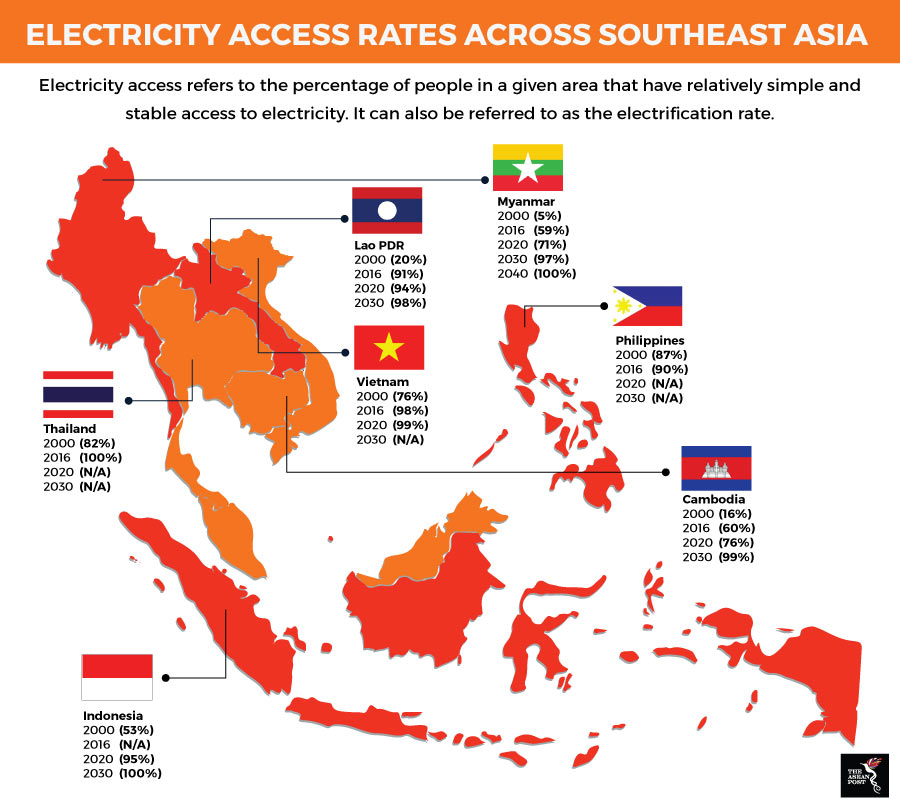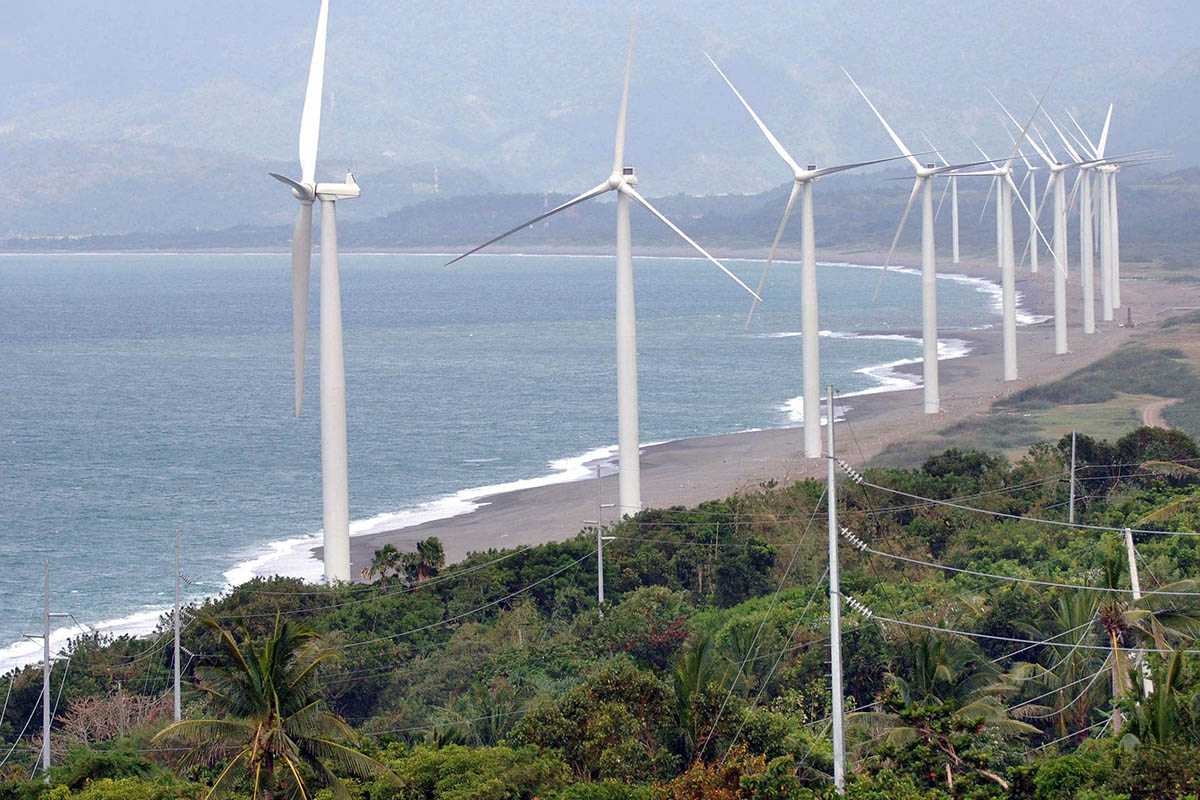ASEAN represents one of the most dynamic parts of the global energy system with its energy demand growing by 60% over the past 15 years. Robust economic and demographic growth pushes this strong demand. Against this backdrop, countries within the region have made significant steps in recent years to upgrade policy frameworks, increase regional cooperation, and encourage greater investment in the region’s considerable renewable energy potential.

Source: Southeast Asia Energy Outlook 2017, IEA
*Information on the electricity access rates for Brunei, Malaysia, and Singapore were not provided by the IEA due to undisclosed reasons.
Here is a look at five renewable energy companies making waves across the region. These companies are highlighted due to their scale of impact or outreach towards the citizens of the countries they operate in. They are also important renewable energy influencers within their respective countries.
Superblock PCL (Solar Energy) – Thailand
Superblock is a Thai based company that generates and sells electricity using alternative energy, solar power, wind, and bio-mass sources. Superblock was founded in 1994 with its headquarters in Bangkok. According to the International Renewable Energy Agency (IRENA), with a capacity of more than 3,000 megawatts (MW), Thailand is Southeast Asia’s biggest solar power generator, having broken into the global top 15 two years ago. From that number, Superblock holds a solar power capacity of 760 MW and is on the cusp of securing the Thai government’s approval for a 695 MW wind project. At the moment, it is targeting a growth in revenue of 25% each year and to have overseas revenue contributions escalate to 20%-30%. In February, Reuters reported that the company is looking to invest US$1.76 billion to install 700 megawatts (MW) of wind farms in Vietnam. Such a move is indicative of its desire to move beyond solar energy production and tap into the other renewable energy sectors.
UPC Renewables (Wind Energy) – Philippines
Wind energy is slowly taking off in the Philippines, a country that faces a substantial challenge to find cheaper, cleaner, and more efficient ways to power what is one of the world’s fastest growing economies with a population of over 100 million people. Data from the Global Wind Energy Council indicates that the Philippines, being one of the significant emerging wind markets in Asia, is expected to install in excess of 500 MW of wind capacity by 2020 from 33 MW in 2011.
UPC Renewables is a leading worldwide renewable developer with experience in pioneering and constructing world class wind and solar projects. It has been a forerunner in the Philippines’ renewable energy market since 2007. UPC was responsible in developing the 81 MW Caparispisan project in Pagudupud, Ilocos Norte, a wind farm that has gained international attention.
UPC formed companies have developed more than 3,500 MW of operating wind and solar projects with an investment value of over US$5 billion. It also has a development pipeline of more than 5,000 MW.
SN Power AS (Hydropower Energy) – Lao DPR & Myanmar
SN Power AS is a renewable energy company that invests in the acquisition, development, construction, and operation of hydropower assets. The company is fully owned by Norfund, the Norwegian Investment Fund for Developing Countries. In 2014, it took over 20% of shares in the 500MW Theun-Hinboun Power Company (THPC) in Lao DPR. Considering the fact that the country lies entirely in the lower Mekong basin, it has easy access to hydropower energy, and SN Power has realised this potential.
On the other hand, Myanmar’s 39,000MW hydropower potential and only 6% total installed capacity from that potential has garnered interest from SN Power, with plans on investing in this country still pending.
Sarawak Energy Berhad (Hydropower Energy) – Malaysia
Founded in 1932, Sarawak Energy Berhad (SEB) is both a renewable energy development company and a vertically integrated electricity utility, with an ambition to achieve sustainable growth and prosperity for Sarawak by meeting the state's need for reliable and renewable energy. SEB is pursuing the advancement of hydropower resources and has identified further sites as being highly promising for the construction of hydroelectric projects.
The Baleh hydroelectric project, 95 km upriver from Kapit, will be SEB's biggest project, producing power from a 5,625 sq km catchment area, harnessed through a 588 sq km reservoir that is impounded by a 188 m high concrete faced rockfill dam. SEB CEO, Sharbini Suhaili mentioned in an interview last year, "the hydroelectric plant will generate an additional 1,285 MW of renewable energy to the grid when it is fully commissioned in 2025, and will help to meet Sarawak's vision for sustainable growth and prosperity."
Sejahtera Alam Energy (Geothermal Energy) – Indonesia
The harnessing of geothermal energy in Southeast Asia may not be as obvious as other sectors. Therefore, it might come as a surprise to many that Indonesia is expected to become the second-largest geothermal energy producer in the world. Leveraging on this is Sejahtera Alam Energy (SAE), a geothermal developer that will build the PLTP Baturraden geothermal plant, which is expected to generate 220 MW of electricity from three turbines. Output will be transmitted to five districts in Central Java - Banyumas, Brebas, Pemalang, Purbalingga, and Tegal.
SAE obtained a 35-year concession from Indonesia’s Energy and Mineral Resources Ministry to develop a 24,660-hectares plot of land in Baturraden in 2010. As of now, its first well is in the exploration phase, while the plant is projected to become fully operational by 2022.
Making a difference for the planet
Global warming is not just a ‘trend term’ or a catch-phrase that is thrown about. It is a reality of today, with increased temperatures the world over a cause for unified concern. In such a situation, it is indeed an obligation for countries to come up with measures that could somewhat lessen the negative impact that global warming has on the planet. The renewable energy companies mentioned here are attempting to do just that. These entities have paved the way for a more thorough understanding of the importance in harnessing renewable energy resources, in both the short and long run.
